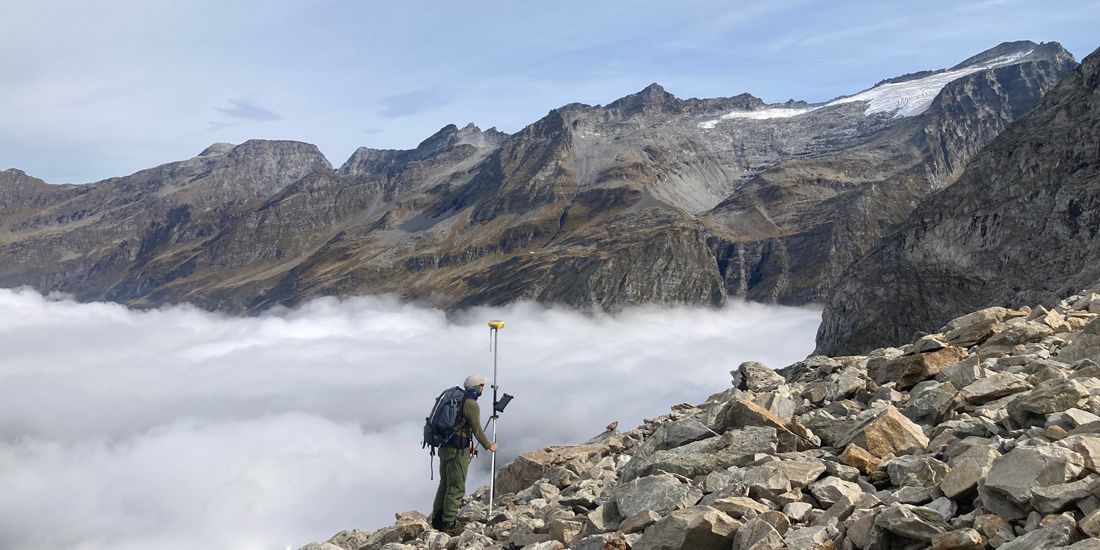21st Swiss Geoscience Meeting 2023 Mendrisio

The 21st edition of the Swiss Geoscience Meeting focused on the New horizons in regional geosciences. It was held in Mendrisio on 17, 18 & 18 November 2023.
The Institute of Earth Sciences of the University of Applied Sciences and Arts of Southern Switzerland (SUPSI) and the Platform Geosciences of the Swiss Academy of Sciences (SCNAT) welcomed 750 participants in the 21st Swiss Geoscience Meeting held from Friday, 17 November to Sunday, 19 November, 2023.
On Friday, 17 November
The theme of the 21st SGM Plenary Session was New horizons in regional geosciences. Four keynote speakers were invited to discuss various topics related to this theme:
Jean-Pierre Burg (Departement of Earth Sciences, ETH Zurich) discussed emplacement mechanisms of ultramafic bodies into the lower density continental crust. He argued that finite differences and marker-in-cell techniques provide a powerful tool for studying intrusion of partly crystallized ultramafic magma from sub-lithospheric depth to the crust. J.-P. Burg also presented the challenges of modeling this process, such as the visco-elasto-plastic behavior of rocks, the ability to model large strain along spontaneously forming shear zones, thermomechanical coupling, and large viscosity contrasts. He concluded that the emplacement of ultramafic bodies into the lower density continental crust is a stable mechanism for a wide range of model parameters matching geological settings in which molten mafic-ultramafic rocks are generated below the lithosphere.
Kathryn Moore (Camborne School of Mines, University of Exeter) presented the key features of a low carbon supply chain, including the use of renewable energy for mining and processing, as well as the vertical integration of supply chains to minimize the carbon footprint of shipping. She discussed the shortcomings of the current mining model, which is primarily focused on extracting large, low-grade ore deposits and argued why this model is not well-suited for smaller, high-grade ore deposits, which require more nimble and adaptable mining solutions. Kathryn introduced us to the concept of responsible small-scale mining as a potential solution for extracting smaller, high-grade ore deposits and to how this approach emphasizes minimizing environmental and social impacts while ensuring economic viability. Based on a research project that has developed strategies for managing the geological complexity, mineralogical uncertainty, and societal expectations associated with small-scale mining, she highlighted the potential for small ore deposits in Europe, particularly in light of the emerging concept of responsible small-scale mining.
Martin Bloemendal (TU Delft & KWR water research) showed how the geological underground can be used as a cost-effective and space-efficient solution to reconciling the temporal mismatch between available and demanded thermal energy. He discussed the various challenges encoutered in underground thermal energy storage operations and in which ways these challenges have been addressed by the ongoing demonstration and research project conducted at the Delft subsurface urban energy lab, showcasing their efforts to successfully develop and implement underground heat storage systems to facilitate the energy transition.
Regula Frauenfelder (Norwegian Geotechnical Institute & University at Oslo) demonstrated how remote sensing has become an indispensable tool for regional-scale identification, quantification and monitoring of natural hazards, especially thanks to improved data collection techniques and recent platform development that have enabled the acquisition of imagery at previously unprecedented spatial, spectral, radiometric and temporal scales. Her presentation highlighted the advantages of remote sensing for instance to aquire data in unstable terrains or inaccessible regions, but also anytime high spatial resolution information, spatially continuous and multi-temporal mapping capabilities or automated processing are required. Finally, Regula Frauenfelder showcased the use of different remote sensing tools for the detection, mapping and monitoring of natural (geo)hazards such as snow avalanches, rock fall and landslides, exemplified by case studies from Norway and beyond.
On Saturday, 18 November
A record number of 510 scientific presentations (312 talks and 198 posters), spread over 26 symposia, covered the diverse spectrum of current research in geosciences, encompassing the lithosphere, the hydrosphere, the cryosphere, the biosphere, the atmosphere and the anthroposphere.
On Sunday, 19 November
A guided excursion to the UNESCO World Heritage site and Museum of fossils from Monte San Giorgio was proposed to more than 115 interested participants.
The SGM also provided an ideal environment to foster informal contacts and discussion among scientists, in particular during the Swiss Geoscience Party on Friday evening but also at the poster sessions on Saturday. Time was reserved for two poster sessions on Saturday, at which the authors were present for active discussion and feedback


